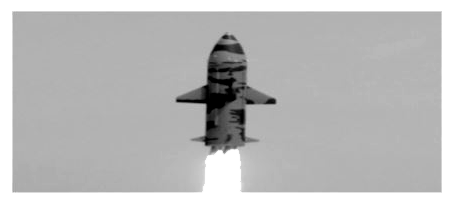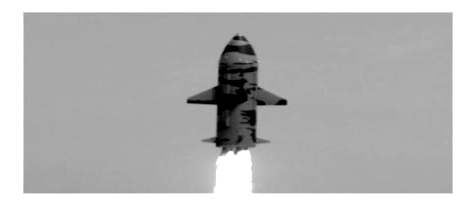The equation of motion of rockets are x=2t,y=−4t,z=4t where the time 't' is given in second and the coordinate of a moving point in kilometres. What is the path of the rockets? At what distance will the rocket be from the starting point O(0,0,0) in 10s.
The correct Answer is:60 Km
Step by step video, text & image solution for The equation of motion of rockets are x=2t, y=-4t, z=4t where the time 't' is given in second and the coordinate of a moving point in kilometres. What is the path of the rockets? At what distance will the rocket be from the starting point O(0, 0, 0) in 10s. by Maths experts to help you in doubts & scoring excellent marks in Class 12 exams.
Topper's Solved these Questions
- BOOK - ARIHANT MATHSCHAPTER - THREE DIMENSIONAL COORDINATE SYSTEMEXERCISE - Exercise For Session 112videos
THREE DIMENSIONAL COORDINATE SYSTEM
- BOOK - ARIHANT MATHSCHAPTER - THREE DIMENSIONAL COORDINATE SYSTEMEXERCISE - Exercise For Session 210videos
THREE DIMENSIONAL COORDINATE SYSTEM
- BOOK - ARIHANT MATHSCHAPTER - THEORY OF EQUATIONSEXERCISE - Exercise (Questions Asked In Previous 13 Years Exam)35videos
THEORY OF EQUATIONS
- BOOK - ARIHANT MATHSCHAPTER - TRIGONOMETRIC EQUATIONS AND INEQUATIONSEXERCISE - Exercise (Questions Asked In Previous 13 Years Exam)12videos
TRIGONOMETRIC EQUATIONS AND INEQUATIONS
Similar Questions
The equations of motion of a rocket are x=2t,y=−4tandz=4t, where timet is given in seconds, and the coordinates of a moving points in kilometers. What is the path of the rocket? At what distance will be the rocket from the starting point O(0,0,0) in 10s?
View SolutionThe equation of motion of a missile are x = 3t, y = -4t, z = t, where the time ‘t’ is given in seconds, and the distance is measured in kilometres.

Based on the above answer the following:
At what distance will the rocket be from the starting point (0, 0, 0) in 5 seconds?View Solution
Knowledge Check
- Question 1 - Select One
The equation of motion of a particle moving on circular path (radius 200 m) is given by s = 18 t + 3t2 – 2t3 where s is the total distance covered from straight point in metres at the end of t seconds. The maximum speed of the particle will be-
A15m/secB23m/secC19.5m/secD25m//sec
The equation of motion of a missile are x = 3t, y = -4t, z = t, where the time ‘t’ is given in seconds, and the distance is measured in kilometres.

Based on the above answer the following:
What is the path of the missile?View SolutionThe equation of motion of a missile are x = 3t, y = -4t, z = t, where the time ‘t’ is given in seconds, and the distance is measured in kilometres.

Based on the above answer the following:
If the position of rocket at a certain instant of time is (5, -8, 10), then what will be the height of the rocket from the ground? (The ground is considered as the xy – plane).View SolutionThe position of a mving point in space is x=2t,y=4t,z=4t where t is measured in seconds and coordinates of moving point are in kilometers: The distance of thepoint from the starting point O(0,0,0) in 15 sec is (A) 3 km (B) 60km (C) 90km (D) 120km
View SolutionThe equation of motion of a missile are x = 3t, y = -4t, z = t, where the time ‘t’ is given in seconds, and the distance is measured in kilometres.

Based on the above answer the following:
At a certain instant of time, if the missile is above the sea level, where the equation of the surface of sea is given by 2x + y + 3z = 1 and the position of the missile at that instant of time is (1, 1, 2), then the image of the position of the rocket in the sea isView SolutionThe equation of motion of a missile are x = 3t, y = -4t, z = t, where the time ‘t’ is given in seconds, and the distance is measured in kilometres.

Based on the above answer the following:
Which of the following points lie on the path of the missile?View SolutionThe coordinate of a moving point at time t are given by x = a ( 2t + sin 2t) , y = a ( 1-cos 2t). Prove that acceleration is constant.
View SolutionThe equation of motion of a particle starting at t=0 is given by x=5sin(20t+π3), where x is in centimeter and t is in second. When does the particle come to rest for the second time?
View Solution

